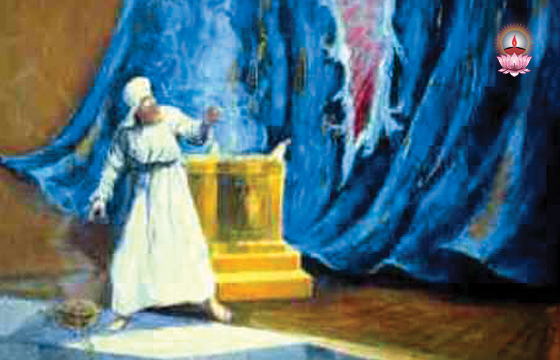Azadi ka Amrit Mahotsav Kolkata event honours four Clergymen
Pope Francis asks businesses to support working women: They’re ‘afraid to get pregnant’
Study: Christianity may lose majority, plurality status in U.S. by 2070
Indian politician declines Magsaysay Award under party pressure
Like John Paul II, Pope Francis heads to Kazakhstan during time of war

Jacob Chanikuzhy
“Good Friday of the Jews.” That is how some call the Jewish feast of Yom Kippur, the Day of Atonement. In the Old Testament, this is actually the only day the Jews were asked to fast. It was the day when atonement sacrifice was done by the Jewish High Priest for his sins and for the sins of the whole people of Israel. Although on other occasions the High Priest appeared glorious in his gorgeous and very costly vestments, on the Day of Atonement, he had to wear simple linen vestments of ordinary priests indicating his humble spirit in making the sin offerings. Usually, several priests were engaged in the temple services. However, on the Day of Atonement all the services were to be done by the High Priest alone. In these respects he prefigured Jesus, our High Priest, who atoned for all our sins all alone.
A veil separated the holy place from the Holy of Holies. The veil that hang before the Holy of Holies warned that nobody was welcome to the innermost shrine where God’s presence was located. Sinful human beings need to keep away from the awful holy presence of God. The Day of Atonement is the only day a human being was allowed to enter the Holy of Holies and only the High Priests was allowed on that day. The High Priest is said to have remained seven days in isolation before the Day of Atonement meticulously studying the rituals of the day. He is said to enter the Holy of Holies sidewise in order to avoid directly looking at the Shekinah in the Tabernacle. He would not linger in the Holy of Holies lest people become anxious about his fate. When the High Priest left the Holy of Holies, he used to walk backwards in order to avoid turning back and thereby showing disrespect to the Tabernacle where God’s presence dwelt. One can imagine the fear ad trembling with which the High Priest entered the Holy of Holies once a year.
A paradigm shift has occurred with the Christ event. Evangelists Mark and Matthew announced that the temple veil was torn into two when Jesus died. These holy evangelists in a way summarized the salvific effects of the paschal mystery of Jesus by referring to the torn temple veil. They did not simply say, that the temple veil was miraculously opened with the death of Jesus. An open temple veil would clearly mean that through the death of Jesus humans were given access to the presence of God. An open temple veil would also indicate that the sin that created a veil between God and man was now atoned for through the death of Jesus, making way to the union between God and humans. However, both the evangelists clearly assert that the temple veil was torn into two from top to the bottom. A torn veil means much more than an open veil. An open veil is still there with the possibility of closing again. However, the torn veil symbolizes a destroyed veil. It refers to an irretrievable step taken by God in reconciling the humanity with himself. A veil torn from top to bottom implies that the tearing is a divine activity. If it were humans they would have torn it from bottom to the top. With the tearing of the temple veil God removes once and for all the veil of the sanctuary making it an open sanctuary. As the author of the Hebrews interprets it, now we have full access to the presence of God (Hebrews 8-10). Torn veil is also the symbol of the body of Jesus (Hebrews 10,20). It is through his torn/crucified body that Jesus obtained access for us to the divine presence. Now, as the veil is torn, we can approach God’s throne with boldness. Nothing and nobody can hinder and terrify us from going closer to God. God in the open sanctuary, far from a ferocious deity, is a merciful God and his throne is called the mercy seat (Hebrews 4,16, ). A veil destroyed by God declares God himself putting an end to the old and imperfect ways of understanding, experiencing, serving and worshipping him. An open sanctuary actualizes what Jesus came to teach us – God is Emmanuel, which means, God is with every one of us, always and everywhere, directly accessible and intimately united with us without a trace of veil to separate.
Leave a Comment